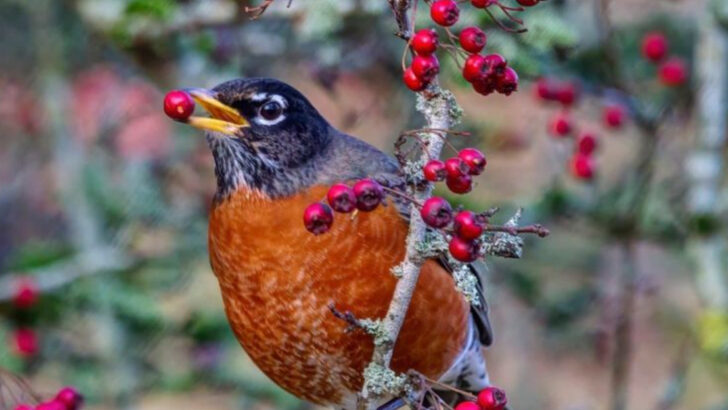A robin’s menu changes like the seasons—because it has to. These bright-chested birds aren’t just hopping around for fun. They’re master foragers, shifting their diets as the world around them transforms. What they devour in spring is not what fuels them in fall. In warmer months, robins hunt worms like feathered ninjas, plucking them from the soil with uncanny precision. But when the ground freezes? They swap protein for fruit, surviving on berries that cling to cold branches like nature’s last offerings. Understanding how robins adapt their meals isn’t just fascinating—it’s a peek into how wildlife survives the shifting rhythm of nature. Let’s see what’s on the robin’s seasonal menu—and why it matters.
Spring Earthworms
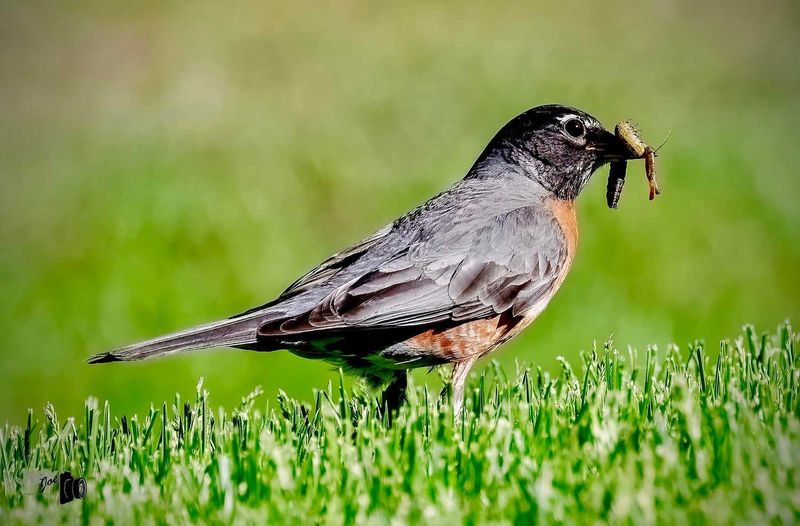
Imagine spotting a robin in early spring, its head tilted, listening for the subtle movements of earthworms. This scene is a classic hallmark of springtime. Robins are adept at detecting vibrations and sounds, making earthworms a primary food source during this season. As the ground thaws, earthworms become more accessible and plentiful.
This dietary shift is crucial for robins as it provides them with the necessary protein to rebuild strength after migration. Additionally, earthworms are abundant in many habitats, making them an ideal spring meal. Robins’ preference for these wriggling treats highlights their resourcefulness and adaptability.
Summer Berries
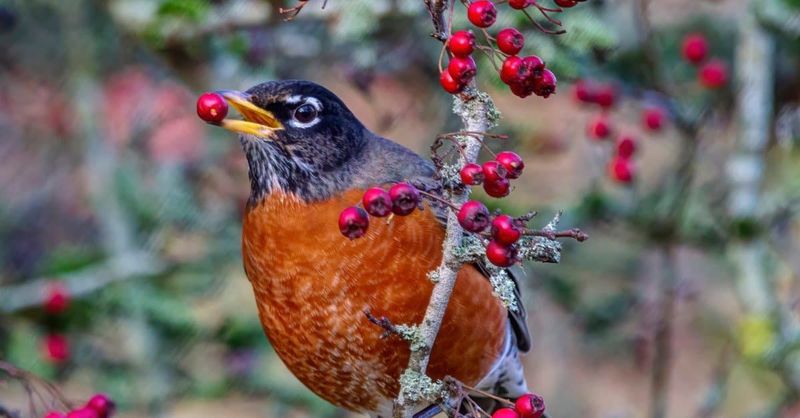
Berries offer a vibrant and plentiful feast for robins during the summer months. Their sweet, juicy nature makes them irresistible to these birds. Gardens and forests become dining halls where robins can feast on a variety of berries. They favor species like blackberries and elderberries.
The high sugar content in berries provides robins with energy for raising their young. This dietary choice also aids in fat storage for the upcoming migration. The sight of a robin amidst a berry bush is a quintessential summer image, illustrating nature’s abundance.
Autumn Fruits
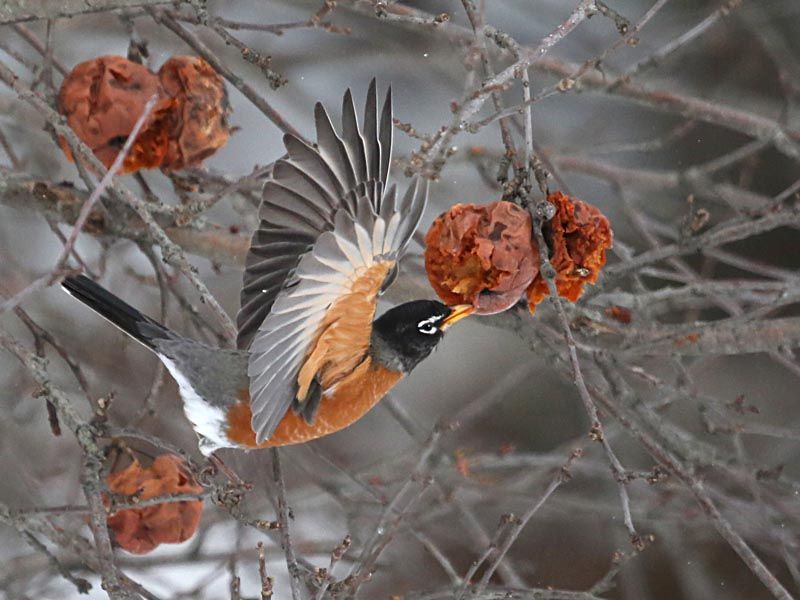
As autumn arrives, robins turn their attention to fruits ready for harvest. Apples and grapes become particularly enticing. The changing leaves paint a picturesque scene, with robins adding a lively touch.
Fruits provide robins with sugars and carbohydrates needed for migratory journeys. This transition in diet is a strategic adaptation to shifting food availability. As the landscape transforms into an autumnal palette, robins’ fruit foraging becomes a familiar and endearing sight. Observing a robin perched on a laden apple branch encapsulates the essence of fall, a time of harvest and preparation.
Winter Crabapples
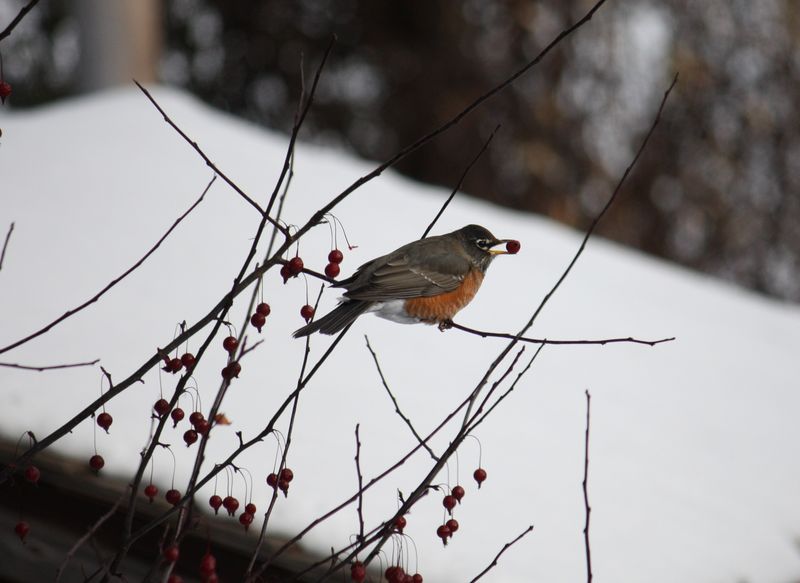
Winter’s chill brings a scarcity of food, yet robins have learned to thrive on what’s available. Crabapples, although small and tart, become a valuable food source. These fruits often remain on branches throughout winter, offering a lifeline for hungry birds.
The robin’s ability to consume these frozen fruits showcases adaptability. This dietary choice supports their survival when other food is scarce. Witnessing a robin in the stark winter landscape, feeding on crabapples, highlights the bird’s resilience and the stark beauty of nature’s cycles.
Insects in Different Seasons
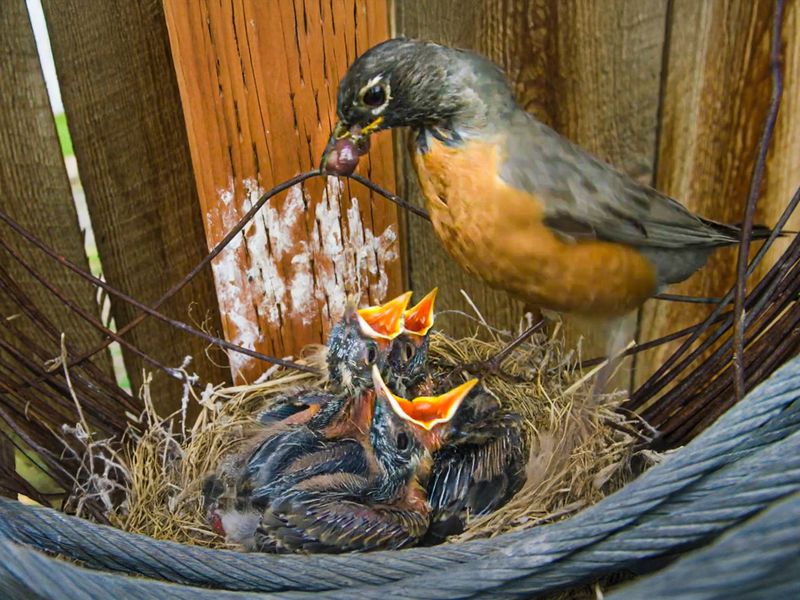
Insects play a varied role in a robin’s diet throughout the year. From caterpillars in spring to beetles in summer, these invertebrates provide essential nutrients. The robin’s keen eyesight aids in spotting these small creatures among leaves and grass.
Consumption of insects varies with their availability and the energy needs of robins. Spring and summer see a spike in insect activity, aligning with the nutritional needs of these birds. A robin deftly catching insects is a testament to its hunting agility, ensuring a balanced diet year-round.

